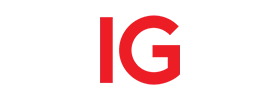Leverage has become essential for modern traders, allowing them to control considerably larger positions with a smaller capital outlay, thereby increasing their market exposure and, potentially, their profits. On the downside, using excessive leverage can also result in devastating losses during periods of increased market volatility. Because of this, jurisdictions such as the EU, the UK and Australia commonly enforce leverage caps of 1:30 to mitigate the risks for retail clients trading Forex pairs on margin. If you plan to use 1:30 leverage, we recommend that you continue reading to learn more about the benefits and pitfalls of Forex margin trading.

Below you can find a list of the best Forex brokers offering leverage of 1:30:
Top 9 Forex Brokers with 1:30 Leverage
-
Fusion Markets
- Australia regulated broker
- MT4, MT5, TradingView, Ctrader
- Leverage up to 500
Trading InstrumentsDeposit Methods- Commodities CFDs
- Crypto CFDs
- Forex CFDs
- Indices CFDs
- Metals CFDs
- Stock CFDs
-
FP Markets
- Australia and CySEC regulated broker
- MT4/MT5, TradingView, Ctrader, Iress
- EUR/USD spread from 0.0 pips
Trading InstrumentsDeposit Methods- Commodities CFDs
- Crypto CFDs
- Energy CFDs
- Forex CFDs
- Indices CFDs
- Metals CFDs
- Stock CFDs
-
IG
- Offers different account types, including DMA (Direct Market Access) one
- Offers turbo warrants on forex pairs, commodities, indices, and equities
- Supports popular platforms like MT4 and TradingView as well as ProRealTime, L2, and more
Trading InstrumentsDeposit Methods- Bond Futures
- Bond Options
- Bond Spread Betting
- Bonds CFDs
- Commodities CFDs
- Commodity Futures
- Commodity Options
- Commodity Spread Betting
- Crypto CFDs
- Crypto Options
- Crypto Spread Betting
- Currency Futures
- Energy CFDs
- Energy Futures
- Energy Options
- Energy Spread Betting
- ETF CFDs
- ETF Options
- ETF Spread Betting
- Forex CFDs
- Forex Options
- Forex Spread Betting
- Index Futures
- Index Options
- Index Spread Betting
- Indices CFDs
- Interest Rate Futures
- Metal Futures
- Metal Options
- Metals CFDs
- Metals Spread Betting
- Share CFDs
- Stock CFDs
- Stock Options
- Stock Spread Betting
- US Stock CFDs
- US Stock Options
- US Stock Spread Betting
-
XM Group
- XM provides great trading experiences using MetaTrader 4 and MetaTrader 5, which are improved by personalized features.
- Zero commission accounts are available
- Top-tier regulation from CySEC, ASIC, FSC, and DFSA oversee XM's operations, assuring transparency and client safety.
Trading InstrumentsDeposit Methods- Bonds CFDs
- Commodities CFDs
- Crypto CFDs
- Energy CFDs
- ETF CFDs
- Forex CFDs
- Forex Options
- Index Options
- Indices CFDs
- Metals CFDs
- Share CFDs
- Stock CFDs
- Stock Options
- US Stock Options
-
AvaTrade
- Minimum deposits from $100
- Licensed by 11 regulatory bodies
- Retail forex leverage of up to 1:400
Trading InstrumentsDeposit Methods- Bonds CFDs
- Commodities CFDs
- Crypto CFDs
- Crypto Options
- Energy CFDs
- ETF CFDs
- Forex CFDs
- Forex Options
- Index Options
- Indices CFDs
- Metals CFDs
- Share CFDs
- Stock CFDs
- Stock Options
- US Stock Options
-
BlackBull Markets
- Broker boasting lightning-fast execution speed
- ECN brokers with tight spreads from 0.0 pips
- $0 minimum deposit requirement
Trading InstrumentsDeposit Methods- Commodities CFDs
- Crypto CFDs
- Forex CFDs
- Indices CFDs
- Metals CFDs
- Stock CFDs
-
Swissquote
- Clients can hold multiple currencies in one account - CHF, EUR, USD, GBP and earn up to 5% interest rate.
- Beyond trading, Swissquote offers banking services, including savings accounts and mortgages
- Traders can use advanced trading platforms, such as MT4, MT5 and a proprietary mobile app for maximum flexibility.
Trading InstrumentsDeposit Methods- Bonds CFDs
- Commodities CFDs
- Crypto CFDs
- Energy CFDs
- ETF CFDs
- Forex CFDs
- Indices CFDs
- Metals CFDs
- Share CFDs
- Stock CFDs
- US Stock CFDs
-
Plus500
- Multi-Level Regulated Broker
- Proprietary trading platforms
- Easy to use mobile app
Trading InstrumentsDeposit Methods- Commodities CFDs
- Crypto CFDs
- Energy CFDs
- ETF CFDs
- Forex CFDs
- Indices CFDs
- Metals CFDs
- Share CFDs
- Stock CFDs
- US Stock CFDs
-
ActivTrades
- Winner of 20+ Global Awards
- MT4/MT5, TradingView
- Leverage up to 1:400
Trading InstrumentsDeposit Methods- Bonds CFDs
- Commodities CFDs
- Crypto CFDs
- ETF CFDs
- Forex CFDs
- Indices CFDs
- Share CFDs
Brokers Compared by Spread
FX Brokers’ Deposit Method Comparison
| Brand | Minimum deposit | |
|---|---|---|
| Fusion Markets | $0 | |
| FP Markets | $50 (AU$100) | |
| IG | $50 | |
| XM Group | $5 | |
| AvaTrade | $100 | |
| BlackBull Markets | $0 (Standard)$2,000 (Prime)$20,000 (Institutional) | |
| Swissquote | $1,000 | |
| Plus500 | $100 | |
| ActivTrades | $0 |
Forex Brokers by Regulator
| Brand | Maximum leverage | |
|---|---|---|
| Fusion Markets | 1:500 (ASIC | Pro Account), 1:30 (ASIC | Retail Account), 1:500 (VFSC | Retail Account) | |
| FP Markets | 1:500 (CySEC | Pro Account), 1:30 (ASIC | Retail Account), 1:30 (CySEC | Retail Account), 1:500 (FSAS | Retail Account) | |
| IG | 1:222 (BaFin | Pro Account), 1:30 (ASIC | Retail Account), 1:30 (BaFin | Retail Account), 1:200 (BMA | Retail Account), 1:30 (FCA | Retail Account) | |
| XM Group | 1:30 (CySEC | Retail Account), 1:1000 (IFSC | Retail Account) | |
| AvaTrade | 1:400 (Pro Account), 1:30 (Standard Account) | |
| BlackBull Markets | 1:500 (FMA), 1:500 (FSAS) | |
| Swissquote | 1:400 (CySEC | Pro Account), 1:30 (CySEC | Retail Account), 1:50 (DFSA | Retail Account), 1:100 (FSC | Retail Account), 1:20 (MAS | Retail Account) | |
| Plus500 | 1:300 (Pro Account), 1:30 (ASIC | Retail Account), 1:30 (BaFin | Retail Account), 1:30 (CySEC | Retail Account), 1:30 (FCA | Retail Account), 1:30 (FMA | Retail Account), 1:30 (SFSA | Retail Account), 1:30 (DFSA), 1:300 (FSAS), 1:20 (MAS), 1:300 (SCB) | |
| ActivTrades | 1:400 (CMVM | Pro Account), 1:30 (CMVM | Retail Account), 1:1000 (FSC), 1:200 (SCB) |
Forex Brokers’ Platform Availability
| Brand | FX pairs to trade | |
|---|---|---|
| Fusion Markets | cTrader, MetaTrader 4, MetaTrader 5, TradingView | |
| FP Markets | cTrader, MetaTrader 4, MetaTrader 5, TradingView | |
| IG | MetaTrader 4, Proprietary Web, TradingView | |
| XM Group | MetaTrader 4, MetaTrader 4 MultiTerminal, MetaTrader 5, Proprietary Mobile, Proprietary Web | |
| AvaTrade | MetaTrader 4, MetaTrader 5, Proprietary Web | |
| BlackBull Markets | cTrader, MetaTrader 4, MetaTrader 5, TradingView | |
| Swissquote | MetaTrader 4, MetaTrader 5 | |
| Plus500 | Proprietary Mobile, Proprietary Web | |
| ActivTrades | MetaTrader 4, MetaTrader 5, Proprietary Web, TradingView |
Comprehensive Comparison of Forex Brokers with 1:30 Leverage
What is Leverage?
Leverage is a financial concept that, as established, enables Forex traders to control larger positions with a smaller amount of capital, thereby increasing the potential gains should the market move in their favour. There are two major components tied to leverage.
-
The Margin
The margin is at the core of leveraged trading; it is the amount of capital required by a broker to open and maintain a leveraged position. As traders are essentially borrowing money from the broker to control a larger position, the margin acts as collateral for this loan. The margin ensures that the trader has sufficient funds to cover any adverse market movements. Thus, if the market moves against the investor, the broker may close the position to prevent further losses and recover its funds from the margin.
-
The Leverage Ratio
Leverage ratios indicate the amount of leverage offered by a broker. They are expressed as a ratio between the trader’s capital and the broker’s funds, typically represented as 1:xx. A 1:30 ratio therefore means that for every single unit of the trader’s capital, the broker provides 30 units. Leverage ratios can vary significantly between Forex brokers, with some offering as little as 1:10 on major pairs and others allowing clients to use leverage of 1:500 or more.
Higher leverage ratios can magnify potential gains but also increase the amount a trader stands to lose should the market turn against them. Investors should carefully consider their risk tolerance and trading strategy before selecting a leverage ratio, as it can have a significant impact on their overall trading experience.
In the following table, you can see several examples of how margin percentages translate into their respective leverage ratios. Essentially, the lower the margin, the higher the leverage ratio:
| Margin Requirement | Leverage Ratio |
|---|---|
| 50% | 1:2 |
| 5% | 1:20 |
| 3.33% | 1:30 |
| 0.20% | 1:500 |
Risks Tied to Leverage
Trading Forex with 1:30 leverage can be a double-edged sword. While the ratio is a powerful tool offering the potential for significant gains, it may also expose traders to substantial risks.
Margin Calls and Account Depletion Risks
One of the primary risks associated with trading Forex at 1:30 leverage is the possibility of margin calls. When a trader’s account balance falls below the required margin to maintain an open position, the broker will issue a margin call, requiring the trader to deposit additional funds or close the position. If the trader fails to meet the margin call, the broker may close the position, resulting in significant losses.
Another risk is rapid account depletion. When trading with high leverage, even small market movements can quickly erode a trader’s balance, leaving insufficient funds to cover subsequent losses. This can trigger a vicious cycle of margin calls, ultimately leading to a significant loss of capital.
Emotional Trading
Leverage can adversely affect a trader’s decision-making in several ways. Larger position sizes can make many traders prone to impulsive trading, feeling compelled to hold on to losing positions in the hope of recouping their losses. The temptation to over-trade is another potential issue, as traders may feel pressured to maintain a high level of activity to justify the costs associated with leveraged trading.
Finally, trading with leverage can create a false sense of security, as traders may feel they have more control over their trades than they actually do. This complacency can cause traders to take on more risk than they can afford.
In conclusion, trading Forex with 1:30 leverage is a high-risk activity. Although it offers the potential for significant gains, it also exposes traders to the possibility of substantial losses. Forex traders should carefully consider their risk tolerance and trading strategy before using this leverage ratio, and they must be prepared to manage their risk exposure to avoid serious financial losses.
Regulators Mandating 1:30 Leverage Limits
Given the risks of leveraged trading, regulators across the globe have taken steps to protect retail investors by imposing strict leverage limits on trading instruments, especially Contracts for Difference (CFDs) on Forex and other financial derivatives. One such limit is the 1:30 leverage ratio, which restricts the amount of borrowed capital that retail investors can use to trade CFDs. Notable regulators that enforce the 1:30 limit include:
- The Financial Conduct Authority: The Financial Conduct Authority (FCA) is the regulatory body responsible for overseeing the financial services industry in the United Kingdom. FCA-regulated brokers are subject to regular audits and must adhere to strict rules, including limiting retail leverage to 1:30.
- The Australian Securities and Investments Commission: ASIC’s primary goal is to protect consumers and maintain market integrity by ensuring that financial institutions operate fairly and transparently. Established in 1998, it enforced the 1:30 cap on Forex CFDs in 2021, affecting major currency pairs in particular.
- The European Securities and Markets Authority: Known as ESMA, this entity sets and enforces rules for the financial markets in Europe, including those related to trading. National regulators apply ESMA regulations, including the 1:30 retail leverage cap implemented in 2018 via the Markets in Financial Instruments Directive II.
Of course, some regulators impose Forex leverage limits that differ from the standard 1:30. In Japan, for example, local traders can use leverage of up to 1:25. There are even supervisory bodies, such as the Financial Services Authority of Seychelles, that do not limit the leverage retail traders can utilise.
How to Manage Leverage Risks
While trading with 1:30 leverage can be risky depending on one’s capital, several risk-management strategies can help protect traders. Some of the most effective are outlined below:
- Negative Balance Protection: This feature prevents your balance from falling below $0. Most brokers offer negative balance protection only when required by a regulator, so sticking to regulated brokers is crucial.
- Stay informed and disciplined: Continuously educate yourself about market conditions and adhere to your trading plan to avoid impulsive decisions.
- Demo Accounts: Beginners are advised to start out with a demo account. This removes risk while still allowing hands-on practice.
- Stop-Loss Orders: Set a stop-loss order to close a position automatically when it reaches a predetermined price, limiting potential losses.
- Diversification: Diversify your trades across different instruments to reduce dependence on a single asset. For example, you can trade various currency pairs or explore other markets.
By implementing these strategies, traders can effectively manage leverage risks and minimise potential losses while still benefiting from the potential gains of trading with 1:30 leverage.
Pros and Cons of Using Brokers with 1:30 Leverage Limits
Trading with leverage of 1:30 requires a deep understanding of risk management and market conditions. Traders should carefully weigh the pros and cons before they begin:
- Increased Potential Gains: Leverage allows traders to control large positions, creating the possibility of higher returns.
- Flexibility: Leverage enables traders to take advantage of market opportunities more quickly, as small movements can result in significant profits.
- Reduced Capital Requirements: Leveraged trading requires less initial capital to take on large positions, making it more accessible to new traders.
- No Access to Higher Leverage: If you trade with a broker that has capped leveraged Forex trading at 1:30, you will not be able to use higher leverage.
- Potential for Inflated Losses: Trading with high leverage increases the risk of margin calls, which can result in the forced closure of positions. Moreover, small market movements can have a significant negative impact on a trade due to leverage.
- Emotional Trading: Leverage can lead to irrational trading decisions fuelled by emotion, as traders may feel obliged to hold on to losing positions or take on excessive risk.
FAQs
Can I use leverage in other markets besides forex?
Yes, leverage is available in other markets, such as commodities and indices. Keep in mind that the leverage cap might not be 1:30, however. According to European regulations, for instance, commodities and gold cannot be traded with leverage of more than 1:10. Additionally, crypto traders are limited to 1:2 leverage.
How can I use higher leverage if I reside in Europe or another jurisdiction with a 1:30 cap?
You have two options. The first is to become a professional trader, which typically grants access to leverage of up to 1:500. The second is to use an offshore broker that accepts clients from your region. The latter is not recommended, as it can make trading even riskier unless you choose a reputable broker.
I cannot find the leverage limits of a broker I want to try, what should I do?
Most brokers allow non-registered users to contact customer support. You can therefore reach out to a support representative directly and inquire about the leverage limits they impose.
Can I lose money if I trade with 1:30 leverage by using a demo account?
No. Demo accounts provide you with virtual funds that do not affect your actual balance. Trading with a demo account is completely risk-free.
Why You Should Trust RationalFX
When it comes to making informed decisions about forex brokers, it's essential to rely on trustworthy sources. RationalFX, a company with over 20 years of experience since its founding in 2005, has established itself as a credible authority in the industry. With an impressive collection of over 2,500 reviews on Trustpilot, boasting a score of 4.2, it's clear that Rational FX has built a reputation for providing reliable and unbiased information.
What sets Rational FX apart is its rigorous evaluation process, which considers over 30 different criteria when selecting forex brokers. This comprehensive approach ensures that every aspect of a broker's service is taken in consideration, including regulation, forex spreads, trading platforms, deposit methods, and reputation. With its wealth of experience, transparent review process, and outstanding customer feedback, Rational FX is a trusted source for anyone seeking reliable information on forex brokers. You can reach us via e-mail at feedback@rationalfx.com or contact us through our social media accounts here: Facebook, YouTube, or leave a feedback here.














